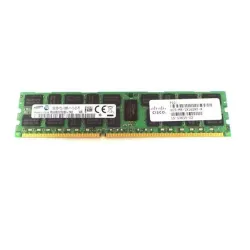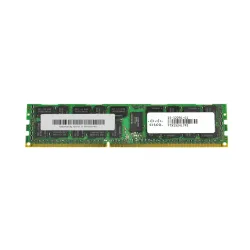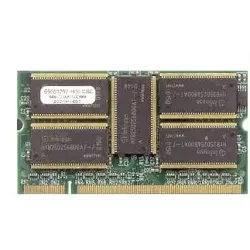Network RAM Benefits and Drawbacks
What is network ram?
Network RAM (Random Access Memory) refers to a type of RAM that can be shared across multiple machines or servers on a network. It allows data to be accessed and processed quickly and efficiently and can be used to improve the performance of distributed systems or applications.
Unlike traditional RAM, which is typically installed directly on a single machine, network RAM is accessed over a network connection. This means that multiple machines can access the same pool of RAM, allowing for more efficient use of resources and better performance in certain scenarios.
Network RAM can be implemented in a variety of ways, including using specialized hardware, software-defined solutions, or cloud-based services. It is often used in high-performance computing (HPC), cloud computing, and other distributed computing environments where large amounts of data need to be processed quickly and efficiently.
The Benefits of Using Network Ram
Improved performance:
Network RAM can help improve the performance of distributed systems or applications by allowing multiple machines to access the same pool of memory. This can reduce latency and improve response times, leading to better overall performance.
Efficient use of resources:
Network RAM allows for more efficient use of resources by allowing multiple machines to share the same pool of memory. This can help reduce the amount of RAM needed on individual machines, saving money and reducing hardware requirements.
Scalability:
Network RAM can be scaled up or down as needed to meet changing demands. This can be particularly useful in cloud computing environments, where resources can be dynamically allocated to meet changing workload requirements.
Improved data availability:
Network RAM can help improve data availability by providing a shared pool of memory that can be accessed by multiple machines. This can help reduce downtime and improve system reliability.
The Drawbacks of Using Network Ram
Network latency:
Accessing RAM over a network connection can introduce additional latency, which can reduce overall performance. This can be mitigated through the use of specialized hardware or software solutions, but it is still an important consideration.
Security risks:
Network RAM can introduce additional security risks, particularly if it is not properly secured. Unauthorized access to the memory pool can potentially lead to data breaches or other security issues.
Complexity:
Implementing network RAM can be complex, particularly in larger or more distributed environments. It may require specialized hardware or software solutions, as well as careful configuration and management.
Cost:
Network RAM can be more expensive than traditional RAM, particularly if specialized hardware or software solutions are required. This can make it difficult to justify the cost in some environments, particularly for smaller organizations or those with more limited budgets.
The Future of Networked RAM
The future of networked RAM is exciting, as it promises to further improve the performance, scalability, and efficiency of distributed systems and applications.
Increased adoption of software-defined network RAM:
Software-defined network RAM (SD-NRAM) is a technology that allows RAM to be virtualized and shared across multiple machines in a network. This can help reduce latency and improve performance and may become more widely adopted as it becomes easier to implement and manage.
Integration with emerging technologies:
Network RAM may be integrated with emerging technologies such as blockchain and edge computing to improve performance and scalability. For example, blockchain-based distributed systems may use network RAM to improve data processing and reduce latency, while edge computing applications may benefit from the improved performance and scalability provided by network RAM.
More advanced security features:
As network RAM becomes more widely used, it is likely that we will see more advanced security features to protect against unauthorized access and data breaches. This may include stronger encryption and authentication mechanisms, as well as more sophisticated intrusion detection and prevention systems.
Continued improvements in performance and efficiency:
As hardware and software continue to improve, we can expect network RAM to become even faster and more efficient. This may include the development of new memory technologies, as well as advancements in network protocols and hardware.
The fastest RAM currently available is DDR5 (Double Data Rate 5) RAM. DDR5 RAM offers significantly higher speeds than its predecessor DDR4 (Double Data Rate 4) RAM, with potential speeds of up to 6400 MHz or more. However, it's important to note that the actual speed of the RAM will also depend on other factors, such as the motherboard, CPU, and memory controller. So while DDR5 is currently the fastest RAM available, its maximum speed will vary depending on the specific system configuration.
A good RAM speed for most modern computers is at least 2400 MHz (DDR4) or higher. However, the ideal RAM speed may vary depending on the specific use case and hardware configuration. For example, gaming or video editing applications may benefit from faster RAM speeds.
Slow RAM can be caused by several factors. Insufficient RAM can lead to slow performance as the system struggles to manage the available memory. Running too many applications at once can consume a large amount of RAM and slow down the system. Memory leaks from some software applications can also cause slow RAM, as they don't release memory even after they are closed. Overheating of the RAM modules can cause them to slow down and reduce performance. Misconfigured RAM settings in the BIOS or UEFI can also cause the RAM to operate at slower speeds than it is capable of. Additionally, using incompatible or mismatched RAM modules can cause the system to run at slower speeds.
To increase RAM size, you can take several steps. First, you should identify the type of RAM your system uses, as well as the number of RAM slots and the maximum amount of RAM your motherboard can support. You can then purchase compatible RAM modules and install them according to the instructions. If your computer's RAM is already maxed out, you can replace the existing modules with larger ones. However, if your current motherboard has reached its maximum RAM capacity, you may need to upgrade to a new one that can support more RAM. It's important to note that increasing RAM size may not always lead to a significant performance boost. The amount of RAM needed depends on the specific system and usage requirements. It's also important to ensure that the RAM modules are properly installed and configured to avoid any compatibility issues or performance problems.











